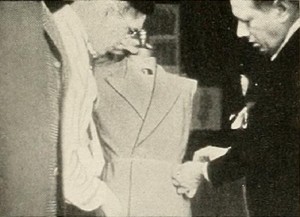
"Kendall T. Greenwood has told an interesting and uniformly attractive story of one of America's great integrated industries in Let Your Body Breathe. From the original Goodall Company plant in Sanford, Maine, to the elaborate retailing methods of the present day, the film presents a clear cut picture of Palm Beach cloth and its part in the modern pattern of warm weather living. Designed primarily for use within the trade, Let Your Body Breathe shows the retailer all the important points in the manufacture of this fabric, its tailoring by the parent company into suits and sportswear and the continued control over the product, even to such details as proper laundering or cleaning. Mr. Greenwood's camera work is crisp, his editing incisive, while the narrative contributes judiciously to an able industrial record." Movie Makers, Dec. 1941, 568.
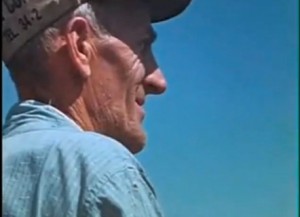
"Documentary about the process of digging for worms during low tide, washing and packaging them in rockweed, and shipping them by rail and truck. The film uses intertitles and shows the tools used for worming as well as snow scenes of the Maine Bait Company among other businesses." oldfilm.org
"Marine mammals of the Pacific Coast: sea lions, sea otters, fur and harbour seals, porpoises, killer whales. Also: Indian whaling techniques; whaling ship Westwhale; processing of whale carcasses at Coal Harbour whaling station." (BC Archives)
Film includes some footage provided to Dr. Carl by the Western Whaling Corporation.
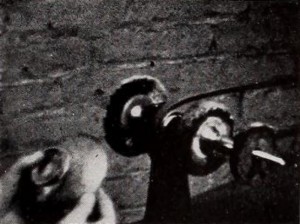
"Helen H. Loeffler has the distinction of being the only woman among those whose films placed in this year's Ten Best selection. Permanent Color is a workmanlike film record of applying vitreous enamel to metal in the production of decorative objects. The movie is replete with well lighted closeups of each operation, from making the vessels of copper to the final polishing after the enamel has been baked. Explanatory titles of the various steps are well handled, and scenes of the finished products provide a colorful ending." Movie Makers, Dec. 1944, 496.
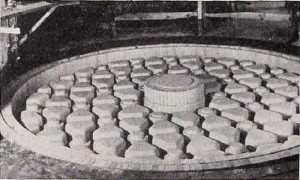
"Pouring A 200 Inch Telescope Mirror, by Edmund H. Wellech, ACL, is a glorified industrial but greatly worthy as a clear record of one of civilization's milestones. Mr. Wellech's film, in addition to being an important scientific document, is, besides, a truly excellent cinematic achievement, for it makes an involved subject entirely understandable. The accomplishment of the single task of determining the correct exposure for scenes of molten glass against a dead black background is in itself a feat that would make the film outstanding. But, beside this, there are carefully worked out cinematic exposition and an approach to perfection in every aspect. As an engineer working at night for the Corning Glass Company, Mr. Wellech devoted his spare daytime hours to making this noteworthy film." Movie Makers, Dec. 1934, 546-547.
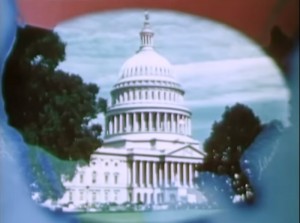
"Bituminous coal is the major actor in The Power Behind the Nation. This sound on film color movie, made by Waldo E. Austin for the Norfolk and Western Railway Company, shows effectively the tremendous part played by soft coal in the development of the nation. The picture is well filmed and thoroughly integrated by an excellent narrative, while lead and end titles are appropriately double exposed on shots of moving trains, which serve to drive home the point that the railroad is the important link between the mine and the consumer. Exceedingly fine sequences of coal mining and well handled shots of the railroad equipment are high points. This film is a fine example of an industrial motion picture produced without the excessive equipment and appropriations sometimes thought to be necessary for such an effort. " Movie Makers, Dec. 1940, 604.
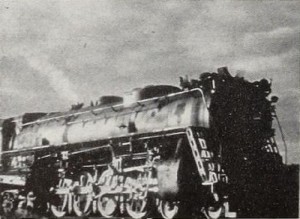
"Railroads Speed the Freights, filmed by T. W. Willard, is a compact industrial picture that presents its story with the maximum of effectiveness. The technique of operating our country's vast railway freight system is clearly summarized; the audience learns the methods employed in sorting, loading and routing freight cars and, in the process, sees some especially handsome movies of railroading. Particularly impressive are the dissolves from the shot of one moving freight train to another. Mr. Willard carefully studied the relationship of motion in the successive scenes and produced a sequence of dissolves, unmatched in cinematic effect. The series is climaxed by a scene of one train passing through the picture, which dissolves to a shot of another train racing almost head on toward the audience. The outstanding quality of this picture is its completeness and suavity, achieved with a minimum of footage and the smallest practical unit print charge." Movie Makers, Dec. 1942, 507.
"Russell Sage Foundation, made by Theodore Huff, ACL, for the members of the staff of Russell Sage Foundation and dedicated to John M. Glenn, retiring General Director, offers an interesting solution of a very difficult cinematic problem. It was desired to present glimpses of the work of the various departments of the Foundation, to include members of the staff of each department and to give the highlights of their achievements under Mr. Glenn's direction. Although the problem was complex, Mr. Huff succeeded in making a smooth and entertaining picture full of cinematic interest." Movie Makers, Dec. 1932, 561.
"'Ry-Lock,' a most unusual subject produced by E. G. Thompson, of Oakland, California. Apparently, Mr. Thompson is either connected with a lock manufactory, or in a position to know a great deal about this work through friends or relatives in the business. At any rate, he combined cinephotography and lockmaking to produce an usually interesting film of considerable pictorial merit. He took the making of a lock as his subject, and followed its evolution from the raw materials and blueprint through all of the processes of manufacture and assembly, up to the finished product, inserted in a door and ready for use." American Cinematographer, Feb. 1934, 415.
"This story of a loaf of bread begins with the plowing of the ground. It continues thru discing and harrowing. Then come fields of waving wheat; the harvest and the threshing; the journey to the grain elevator and the flour mills. Scenes in a modern bakery follow and from there the bread is sent to the retail store. Children eating bread and jam are representative of the 'ultimate consumer'." Educational Film Catalog, 1937 edition, 80.
Total Pages: 4